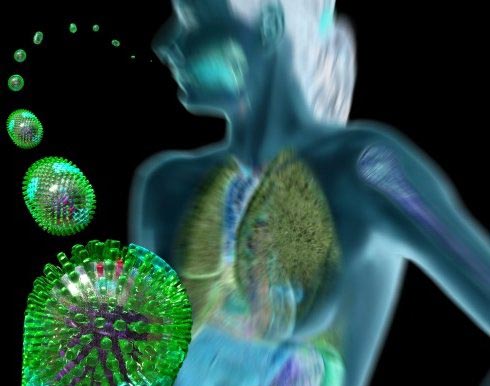Russia makes microchips that can distinguish flu viruses
Scientists at the Institute of Basic Biomedical and Medical Sciences, the branch of the Russian Academy of Sciences in Siberia, have built a microchip that can identify flu viruses in birds, cows, pigs and humans.
According to Alexander Sinyakov, head of the laboratory of the Institute of Biochemistry and Basic Medicine, the continuous monitoring of the antigenic structure of avian influenza virus, assesses the potential of pathogenicity and drug sensitivity of Virus circulating at this time in nature is an extremely important issue of the medical community.

To solve these problems, Russian scientists have studied and created biological microchips that determine influenza. Microchips use small fragments of the viral genome, in which more than 800 different experimental probes are analyzed for automatic DNA synthesis and placed in a normal glass slide. Each probe is inserted into the slide on a predetermined position, usually a 300 micron sized circle. The circle is called spot spot; The whole whole spot spot forms the virus that defines the virus.
To identify viruses, doctors will take samples from the throat or nose of the sick person and then hand it to the microchip for processing the sample.
Specifically, the virus genome will be separated from the sample taken and marked with fluorescence, then separated the layer into the microchip containing 800 different dipsticks. Depending on which pattern is linked to the spot spot, we will get information about the variant of the virus. Different bright spots appear on the IC to help identify the virus more easily.
Russia's invention creates favorable conditions to help prevent group A viruses, which are considered the current serious threat of the health sector.
Group A influenza virus is a virus group that constantly changes rapidly and cannot be completely destroyed. Every time a flu pandemic breaks out, the pharmaceutical agencies have to rebuild from the beginning a new vaccine against a variant of this group virus. This is also the reason why the World Health Organization (WHO) has established a network of global stations specializing in monitoring changes in the genetic structure of avian influenza viruses, to determine the structure. vaccine, dealing with each new outbreak.
In the future, Russian scientists intend to expand the microchip's ability to not only identify the virus variant but also the resistance level of the virus./.
- Phone is water soluble
- Virus detection makes people silly
- Discovering new viruses that harm animals
- Collect 3-dimensional images of flu viruses
- The most dangerous computer viruses of the time
- Reveal how to transform ordinary people into superman
- Unexpected effects of plant viruses
- Fabrication of microchips from molybdenum materials
- Face 25 most terrible computer viruses of all time
- Color discrimination by hand
- British companies want to implant microchips on workers
- The unique images of Russia
 Green tea cleans teeth better than mouthwash?
Green tea cleans teeth better than mouthwash? Death kiss: This is why you should not let anyone kiss your baby's lips
Death kiss: This is why you should not let anyone kiss your baby's lips What is salmonellosis?
What is salmonellosis? Caution should be exercised when using aloe vera through eating and drinking
Caution should be exercised when using aloe vera through eating and drinking